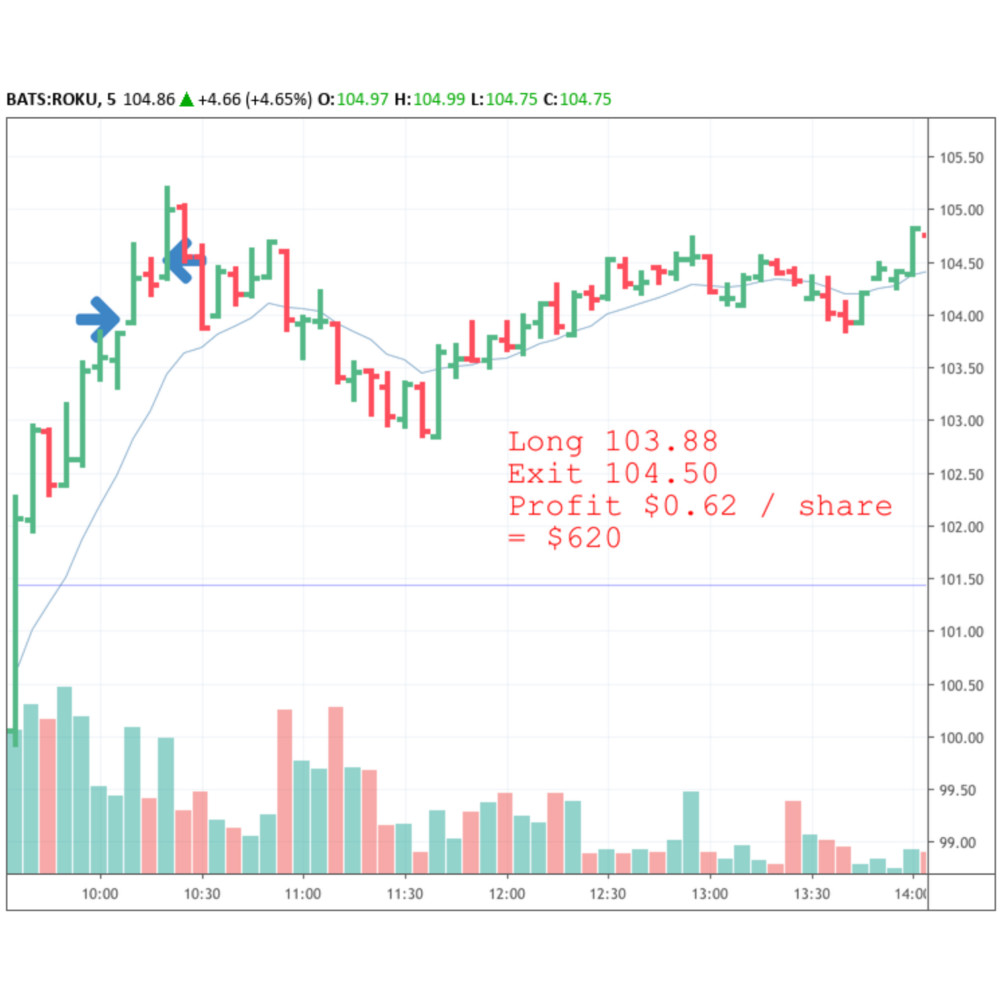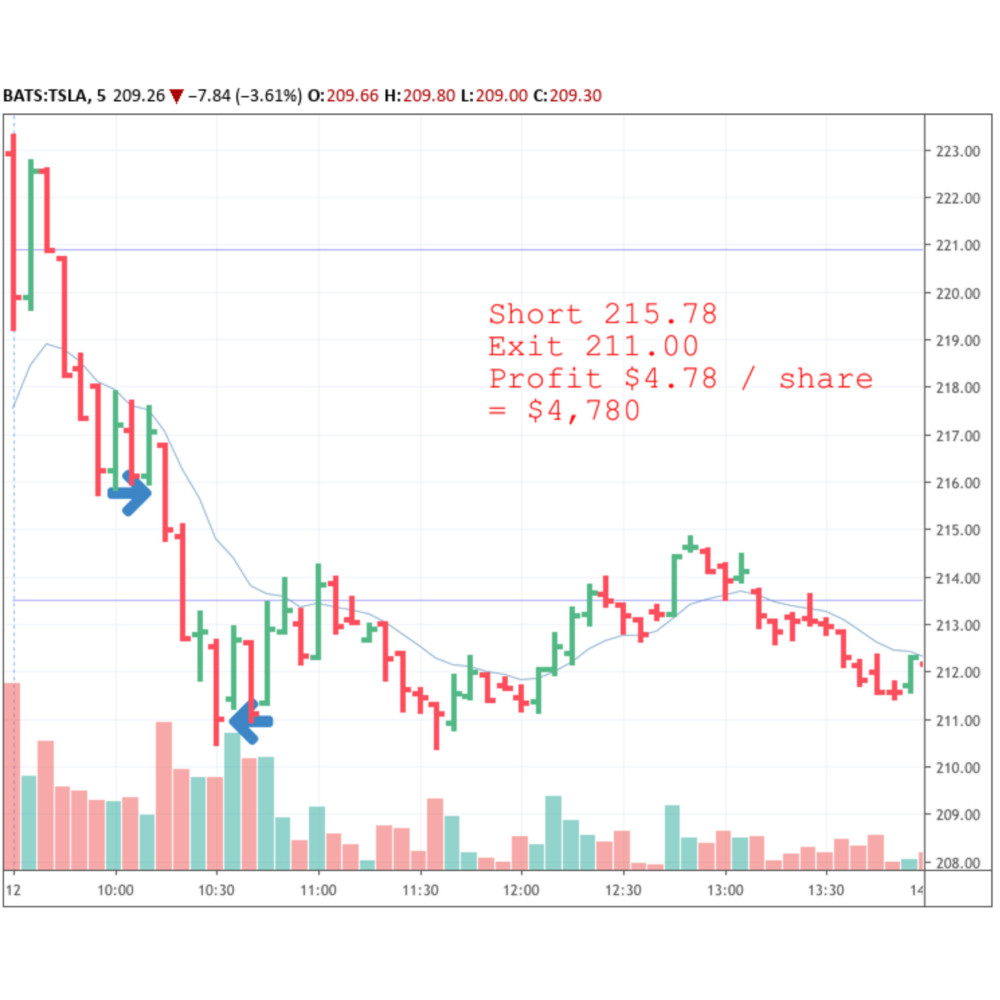Creating a daily watchlist of stocks that are likely to move well is crucial to consistent profits in day trading. With such a huge universe of stocks out there — thousands that are worthy of consideration — we can’t possibly watch them all. We have to narrow them down to around a dozen or so that we think have the best chance of making an easily tradable, high probability move. Watching a dozen stocks is easy.
Added to the daily watchlist are a set of ‘core’ stocks — stocks that tend to make good moves at least a few times a week. They’re like reliable old friends. In my stocks book I talk at length about the methods I use to build both my daily and core stock lists. For today’s trades post, I wanted to show you a couple of trades that came from my core list (these are from Wednesday 12th June).
First up, ROKU:

When we watch a core stock, we aren’t looking at it any differently to the daily picks. We want to see the same patterns. We’re using the same rules and guidelines to judge them. And we want to see the same criteria fulfilled before we take an entry. The same goes for exits. We trade core stocks and daily stocks exactly the same. So here on ROKU it’s a standard entry pattern confirmed by momentum, and the exit happens when that momentum falls away. As it happens, there was more to be squeezed out of the trade, but not using my trading plan. Following the plan is the most important thing. Like I said yesterday, we can’t trade hindsight.
Next, Tesla, a stock I’ve been trading a fair bit recently.

Again, this is a standard setup with an entry confirmed by momentum. As it so often does, TSLA fell far and fast. I almost exited on the green bar, but with the previous day’s low just above I decided to hold it and see which way it would turn. There was already so much profit on the trade that I was happy to put my (mental) stop above that previous low. I was rewarded with an elevated heart rate and an extra two grand or so in profit, which I think was a fair exchange.
Five Grand In Half An Hour?
Making almost five thousand dollars in twenty minutes, TSLA was obviously an outlier of a trade, but lesser four figure trades from TSLA do occur several times a week. It’s not a stock for beginners, but it does go to show that once you have a system nailed down, and the psychology locked down too, you can take on these bigger stocks.
Taking those two trades together, it looks like I made more than five thousand dollars in about half an hour of work. But of course the reality is somewhat different. My ‘work’ starts before the market opens, building a list of stocks to watch. Yes, these trades came from the core list, but that has to be built too. Then there’s the waiting time. Both trades were over by around 10:30, but I still had to be in front of the screen waiting for them to set up then play out. With premarket work and waiting time, half an hour becomes two hours.
Five Grand In Two Hours?
The same goes for trading. The two trades I posted here may well have made more than five thousand dollars in about thirty minutes, but really that profit comes from years of study and practice and experience.
Does that mean I made five grand in two hours? It would still be a good hourly rate, right? But no, that’s not how it works. Because we have to count the time spent learning, practicing, and honing our skills. Nobody is going to come to a stock chart and make five grand on their first day, just as nobody is going to start any new job as an instant expert. A plumber might fix a broken heating system in ten minutes and charge me a small fortune for it, but I’m not paying for the ten minutes she had her tools out and the cover off the boiler. I’m paying for the years of training, apprenticeship, and experience she has been through that enabled her to find and fix the fault so quickly.